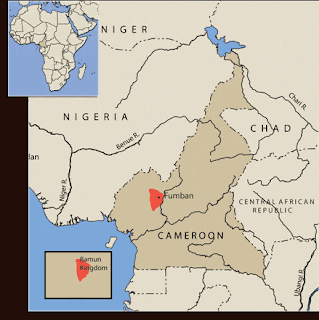Resources and Trade in Cameroon
GDP and Economic Growth
Cameroon's GDP continues to rise, but is still a country with a high poverty rate and a lethargic per capita income. The projected GDP (purchasing power parity) for 2015 is $72.64 billion, ranking Cameroon 96th in the world. [1] As of the year 2000, nearly a third of the country's population was below the poverty line at 30%. [2] Exports, natural resources, and agriculture continue to assist the growth in GDP.
Natural Resources and Agriculture
https://commons.wikimedia.org/wiki/File:Bananier_Bana_Cameroun.jpg
Cameroon is home to many natural resources such as aluminum, cobalt, nickel, iron ore, diamonds, and rutile and the government is active in promoting the mining of these materials to help the economy. [3] Agriculture is a growing sources of exports and each region of Cameroon is more favorable for certain crops. On the coast bananas and cocoa; on the southern plateau it is coffee, sugar, and tobacco; In west it is coffee; and in the north it is cotton. [4] Even with a large supply of resources and agriculture the two main industries are petroleum and timber. [5] Petroleum exports has slowed but still accounts for a quarter of revenues. [6] The timber industry has led to Cameroon becoming one of the major suppliers of wood in the world; 60% of its raw timber goes to China and 80% of its processed wood goes to European Union countries. [7]
via Wikimedia Commons
https://commons.wikimedia.org/wiki/File:Quotidien_de_Tayap.JPG
Issues in Trade
There are several issues that have a direct impact on trade and the people and geography of Cameroon. First, even though Cameroon's coast is on the Atlantic Ocean getting materials to the coast is an issue at times. Moving materials, such as timber, from the rainforests in the south to the coast can be a difficult task since there are only a few main roads/highways and many of the rivers in the south have rapids and waterfalls. Second, with many of the resources located within the forests the issue of deforestation has grown and caused many indigenous people to become transplanted. [8] Third, Cameroon has not mined many of its natural resources and this hurts economic growth. Finally, much of the agriculture in Cameroon is subsistence farming and any extra is sold at local markets and not contributing as a national export. [9]
Growth in Cameroon
Cameroon is a country with many valuable resources and industries. The petroleum industry and timber have allowed for development as a country and certain crops such as cocoa and coffee are very important. These resources have allowed for Cameroon to export products to countries such as France, Spain, United States, and China. [10] With the growth of industry you will have more trade routes and opportunities especially being located on the western coast.















